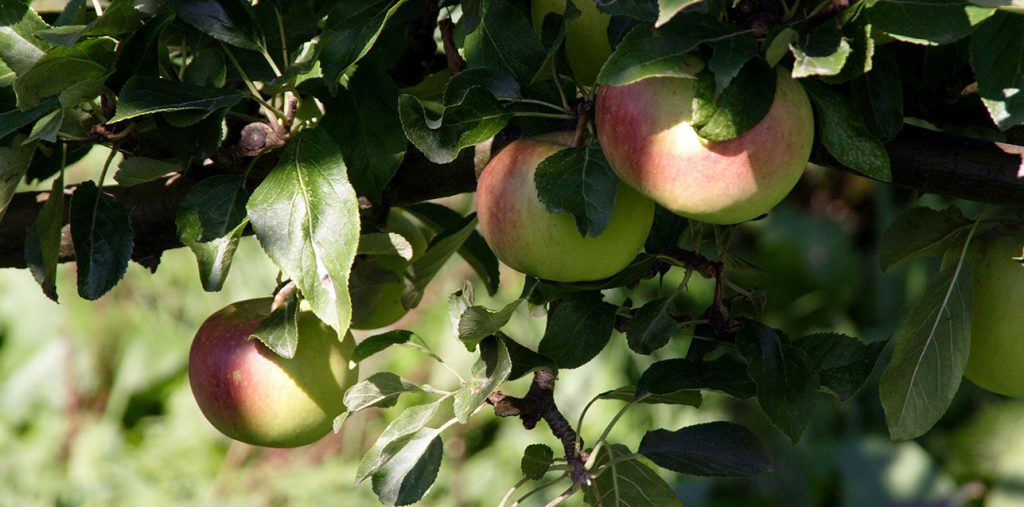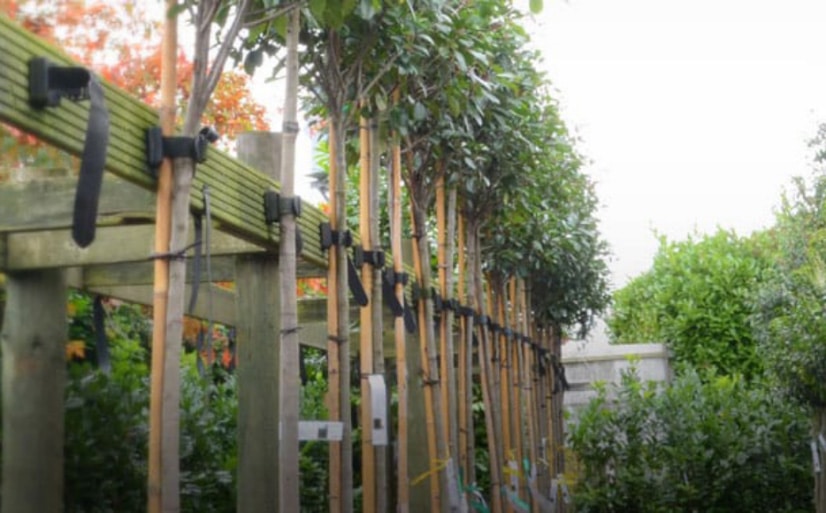As Christmas draws near, explore our comprehensive guide to holly trees and hedging. Here we offer insights into the classic Common holly (English holly), as well as information on non-native options such as Ilex ‘Nellie R. Stevens’.
Common holly (Ilex aquifolium)
Key features and Habit
Common Holly (Ilex aquifolium) is a slow-growing, medium-sized evergreen native to the UK. It is known for its dense crown, which is upright in its youth and develops a rounded, cone-like shape as it matures.
This holly variety has dark, glossy leaves that feature a distinctive wavy margin with sharp spines. It also has small white flowers that emerge between May and June, and bright red berries on pollinated female plants from September through early spring. These berries provide gardens with a vibrant splash of classic Christmas colours, which is what makes Holly so popular during the festive season!
Holly is notably tolerant of both partial and full shade and demonstrates good drought resistance once established. Its resilience and native status make it an excellent choice for a wide range of locations where non-native plants may not be preferred. This is a remarkably hardy variety that thrives in most well-drained soil types, including clay, chalk, and acidic soils. Holly also exhibits good resistance to honey fungus and blends well with other evergreen species like laurel and privet.
We highly recommend Holly, having ranked it among our top 10 evergreen hedges for its exceptional qualities.
Uses
Requiring minimal upkeep and exhibiting a steady growth rate of 10-20cm annually, to a potential height of 4m, Holly is an excellent choice for creating a substantial hedge.
Beyond its aesthetic appeal, Holly boasts remarkable practicality. Its wood is notably strong and flexible, enabling it to withstand harsh weather conditions such as strong winds and heavy snowfall. This makes a Holly hedge a versatile solution for various needs, including effective windbreaks, protection in maritime environments, formal garden designs, and even as a natural intruder deterrent.
If you’re looking for a resilient and attractive hedging option that provides constant cover, Holly is a superb choice.
Benefits to Wildlife
Holly is a fantastic addition to any garden, offering benefits that extend far beyond just the Christmas season (especially to wildlife). Its summer flowers are a magnet for bees, butterflies, and other important pollinators, which are crucial for a flourishing garden. Additionally, the plant’s spiky leaves deter predators so this tree is an ideal for nesting sites for birds and other animals looking for shelter and protection. The berries that appear later in the year also provide a valuable food source for birds during the late winter months, particularly after frosts have softened them. Importantly, holly berries are also safe around farm animals and horses, allowing you to plant them with peace of mind!
Ilex ‘Nellie R Stevens’
Ilex ‘Nellie Stevens’ is a self-pollinating hybrid of our native English holly, this means that it will bear red berries regardless of whether the plant is male or female. It is not native to the UK.
Hopefully this comprehensive guide to holly trees and hedging helped. If you have a specific question, please get in touch by calling the Tree Nursery or drop us an email.
Read more from King & Co:
2. Best Trees for Privacy: Before and after planting!
3. 10 Trees for Small Gardens!
4. Tree Planting Kits: Give your newly planted tree the best start!





